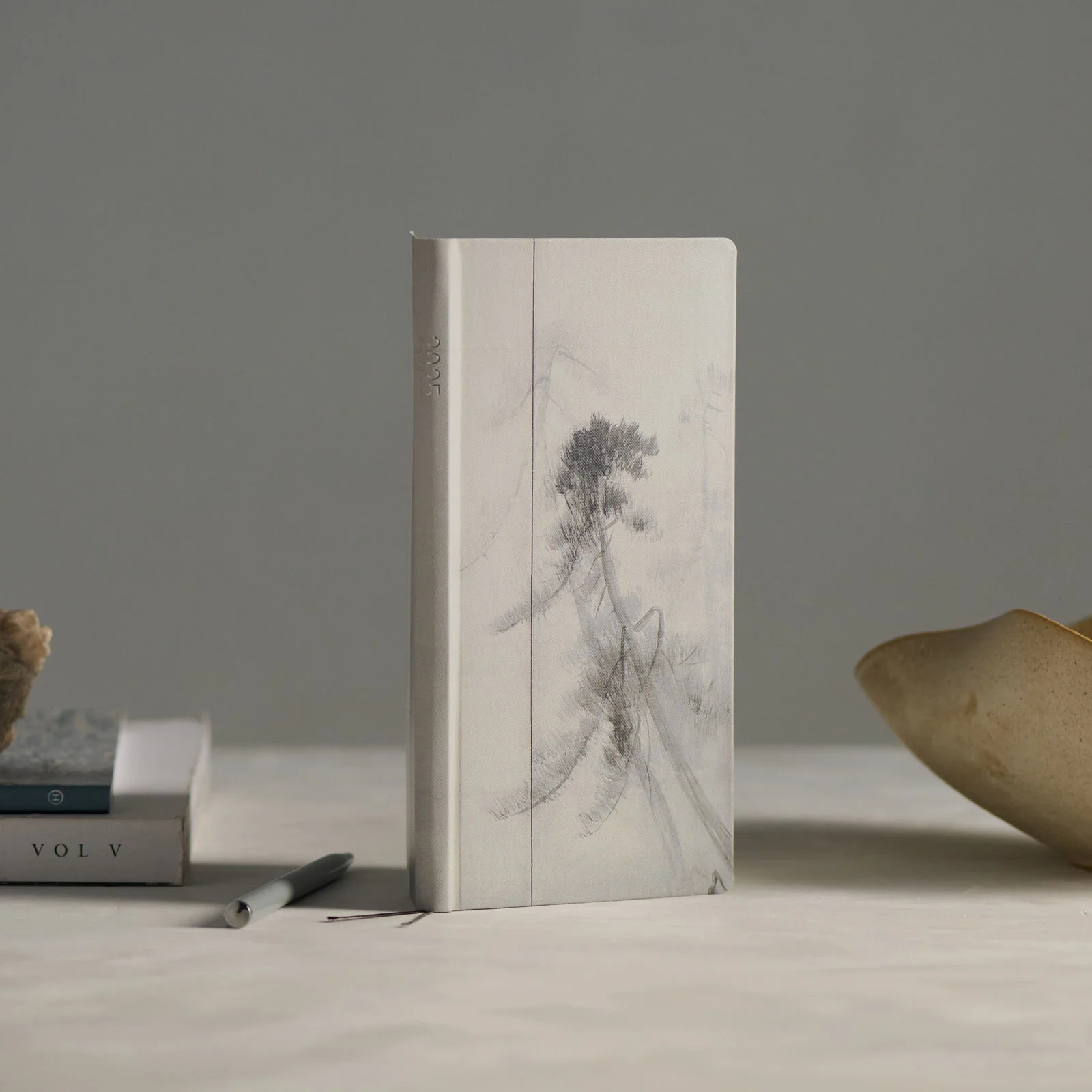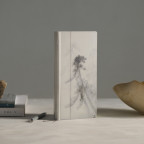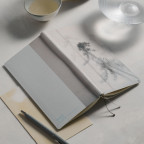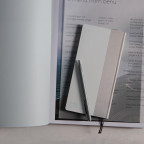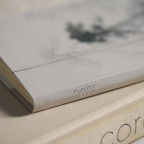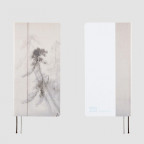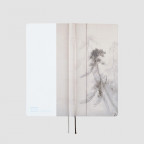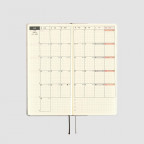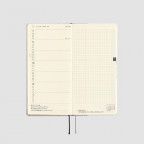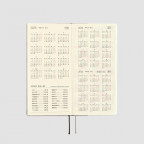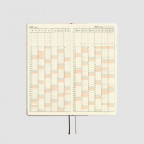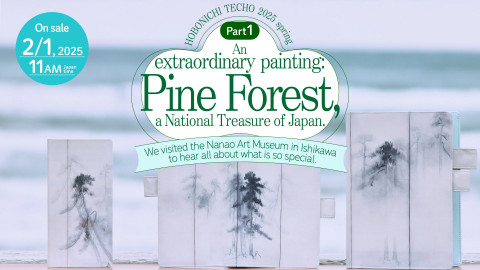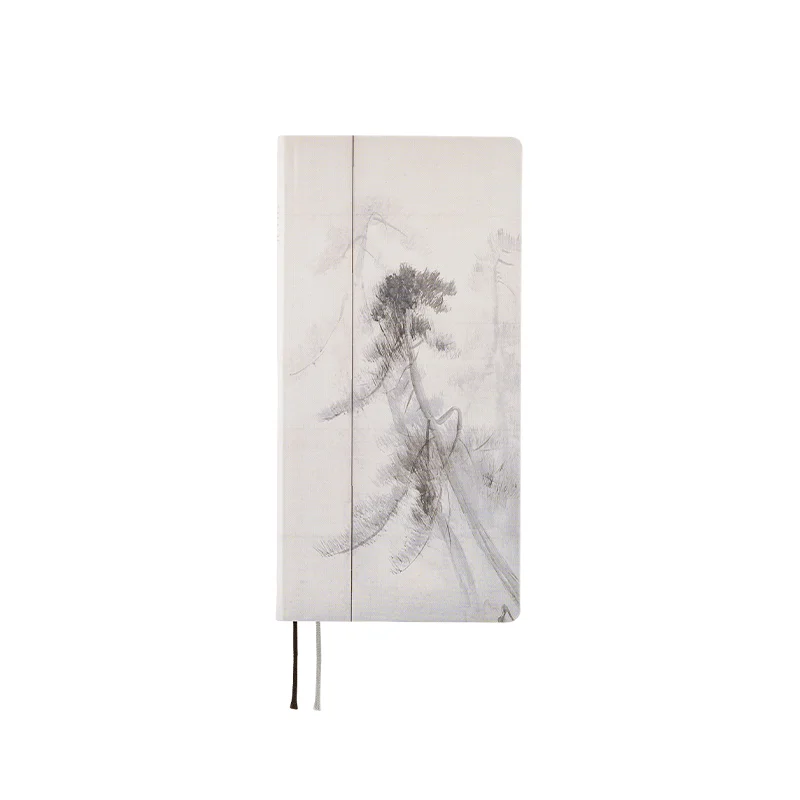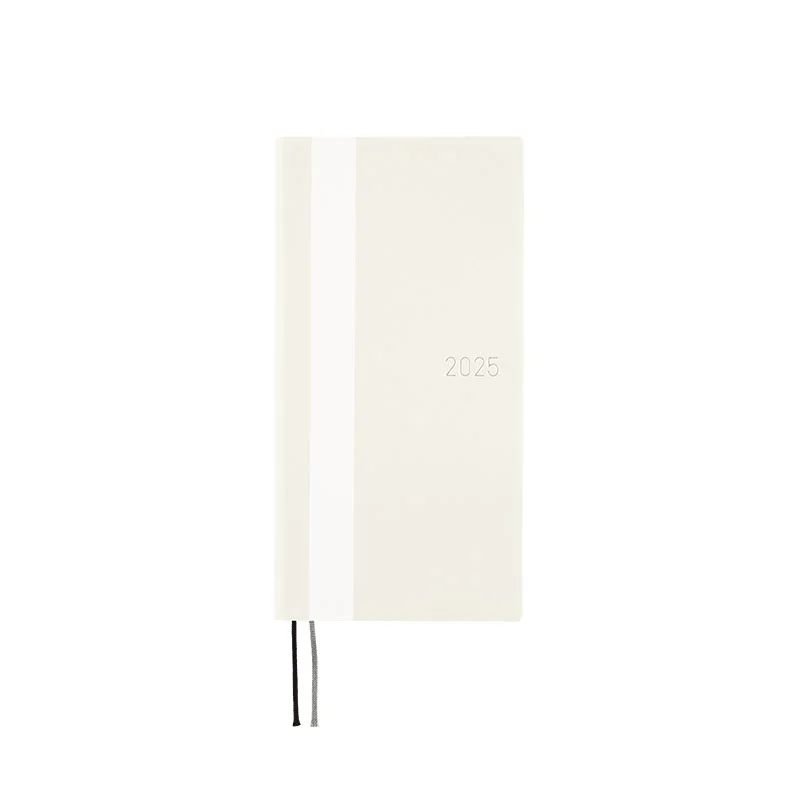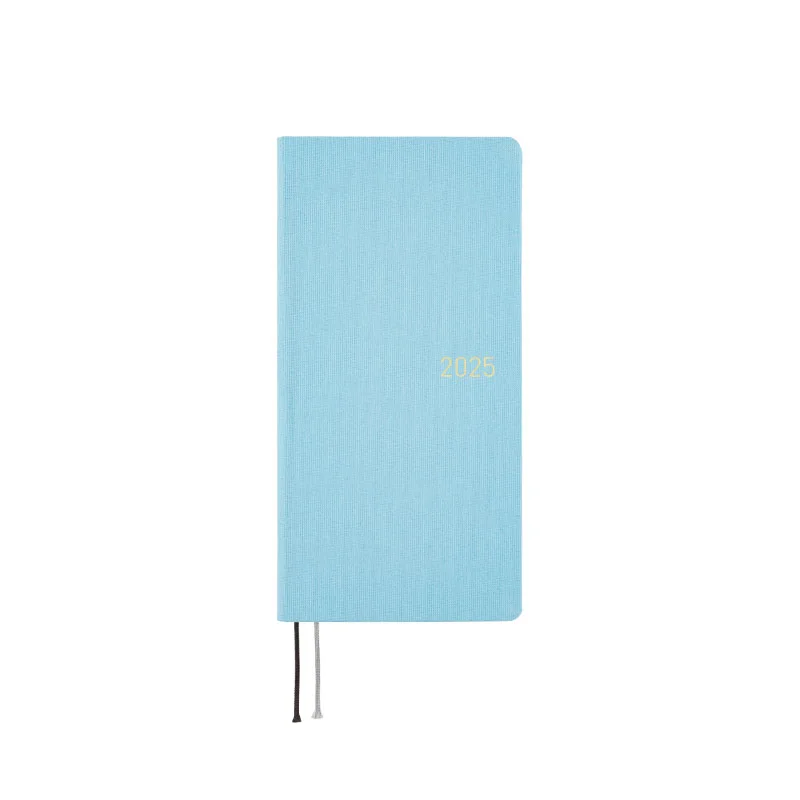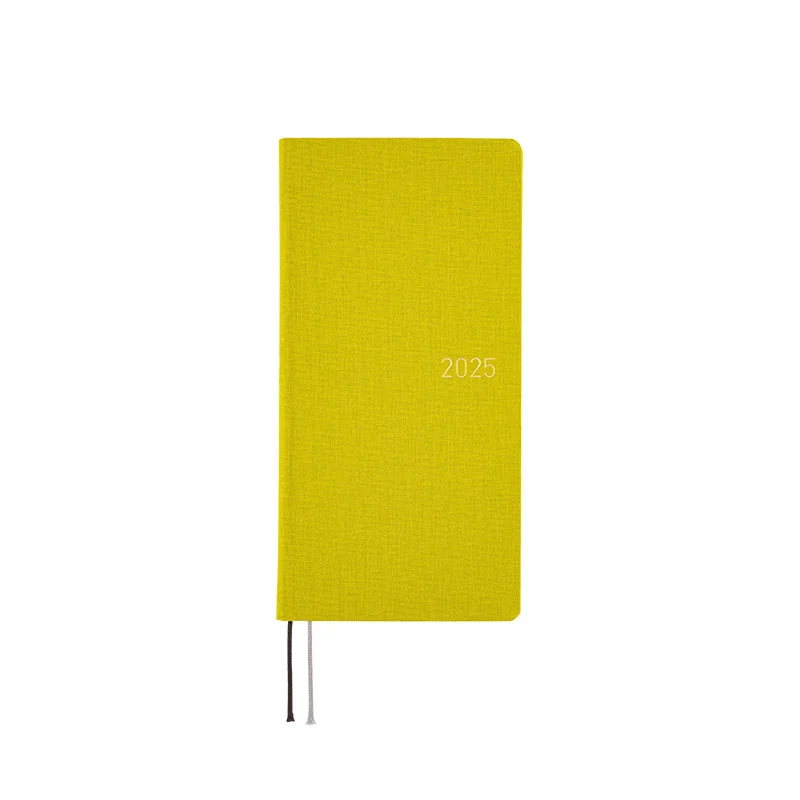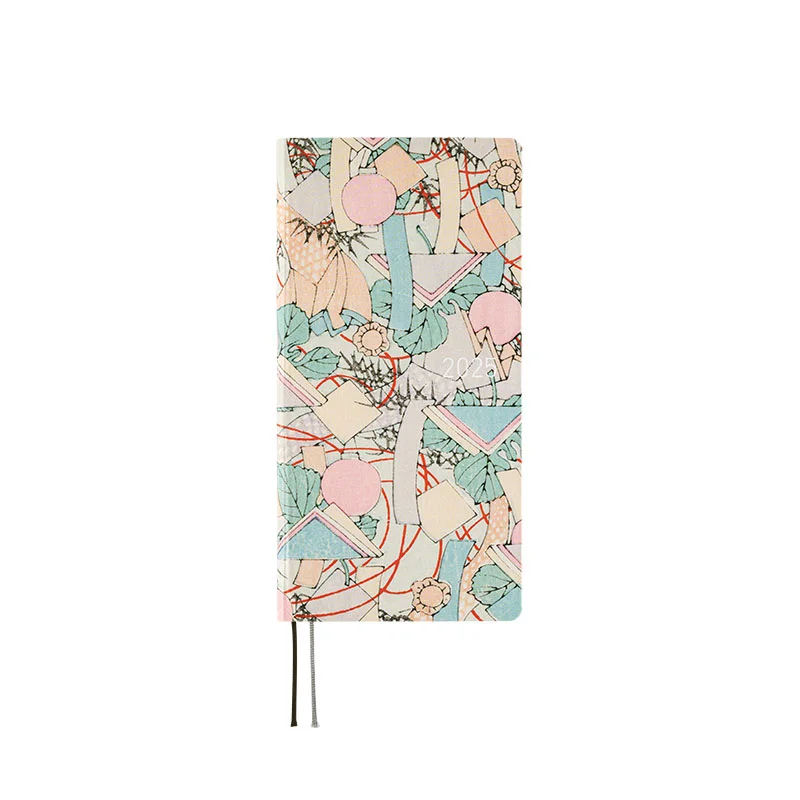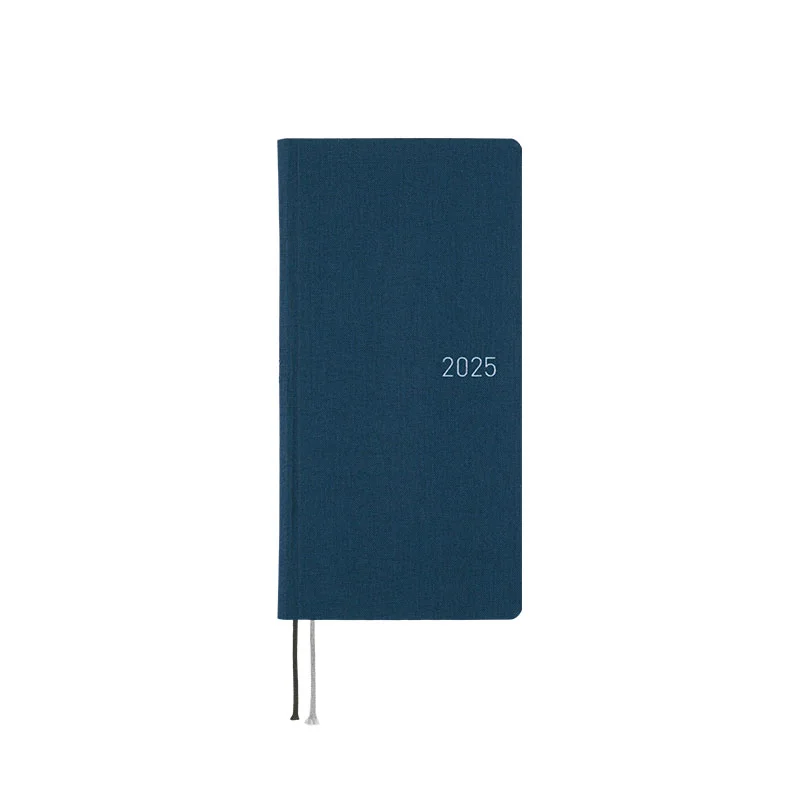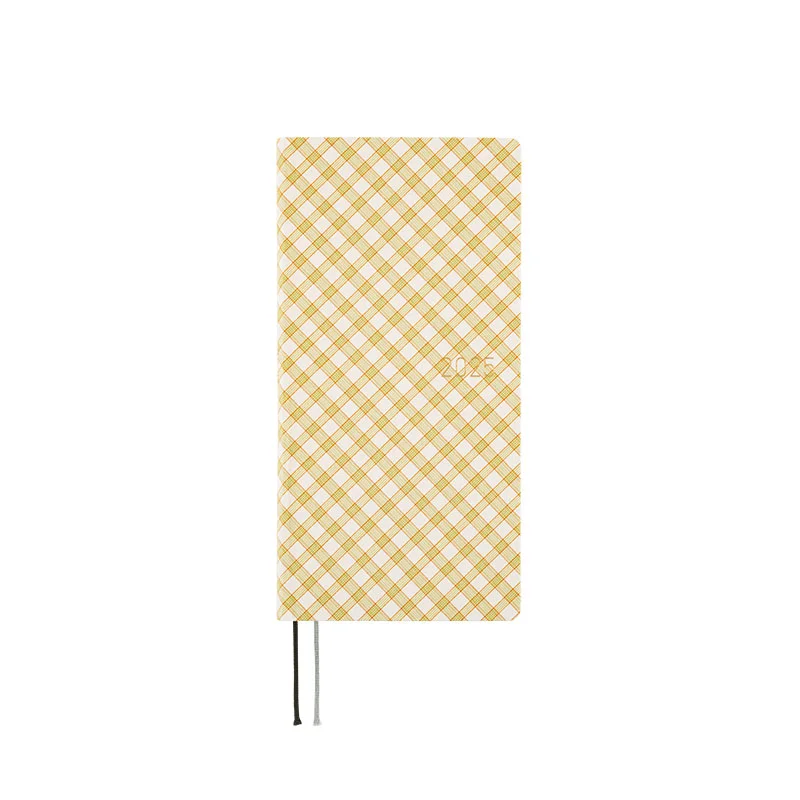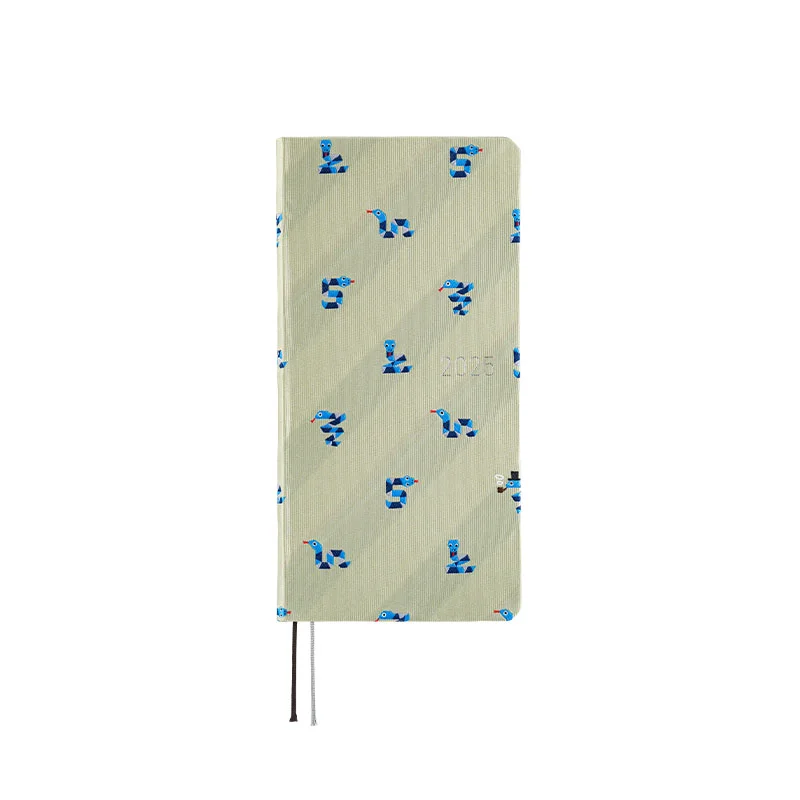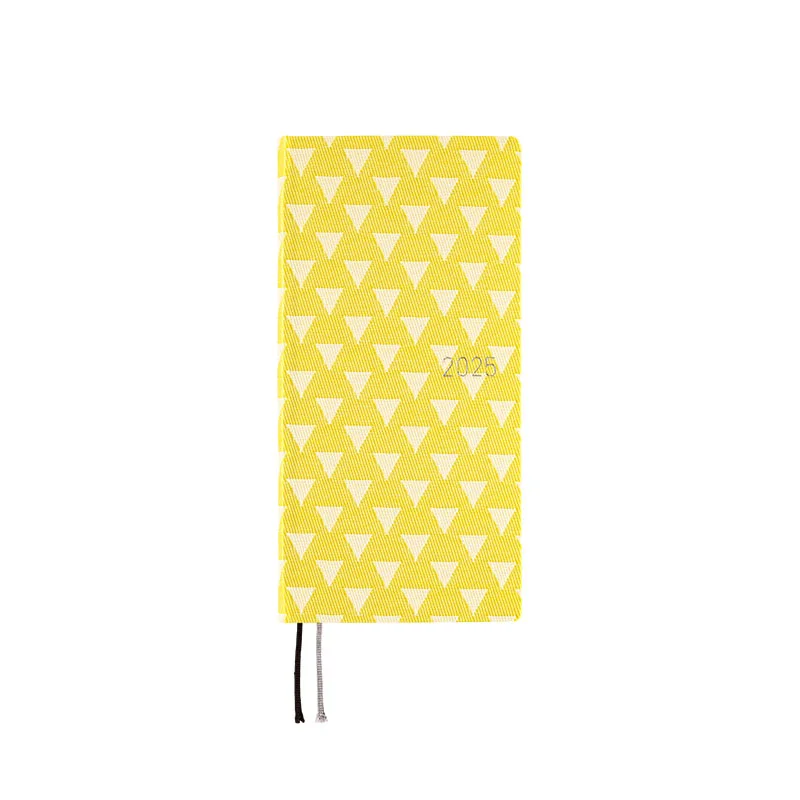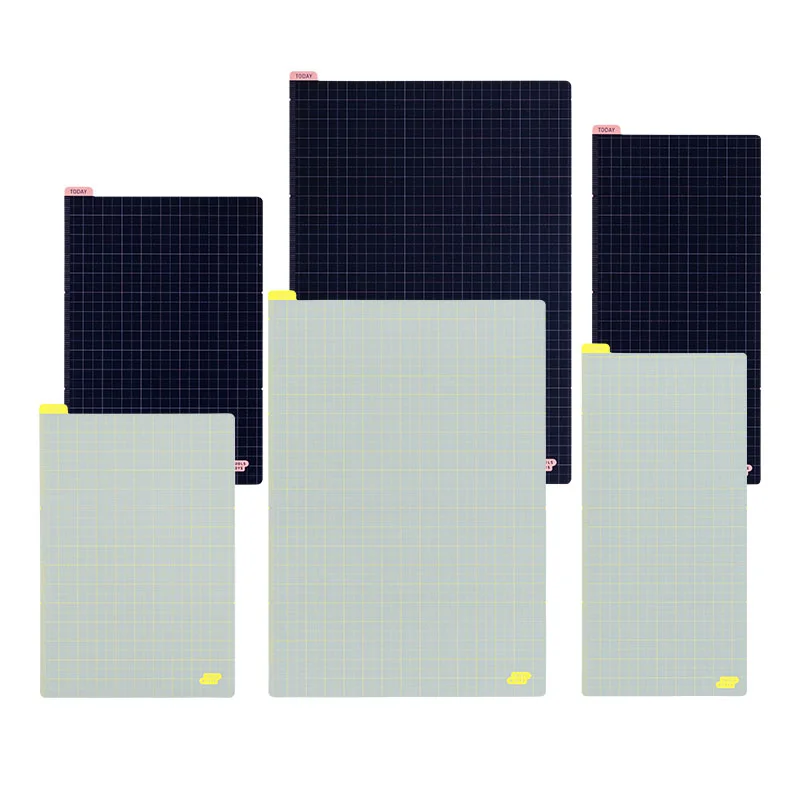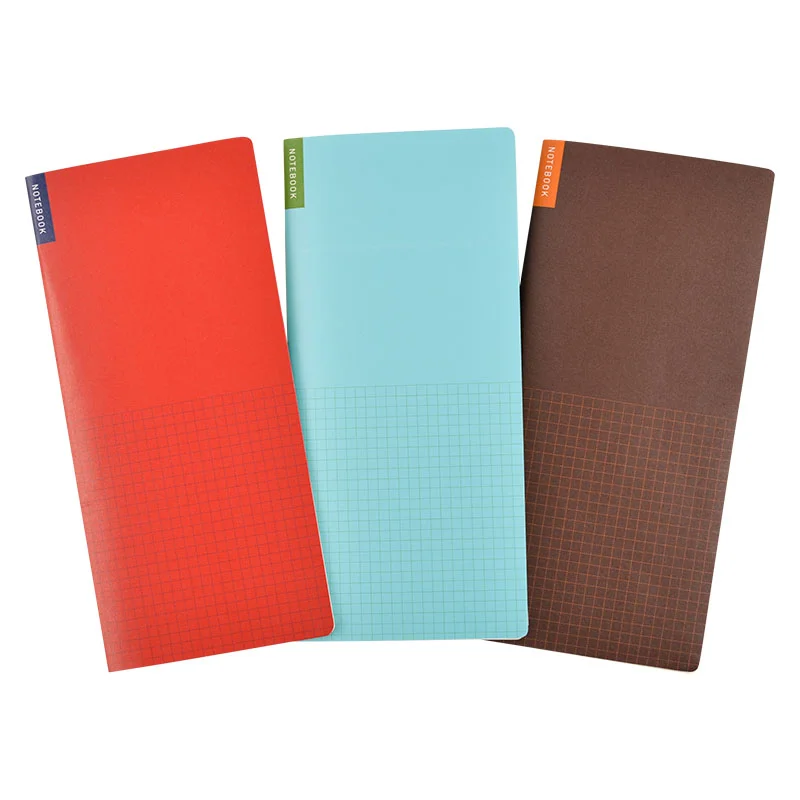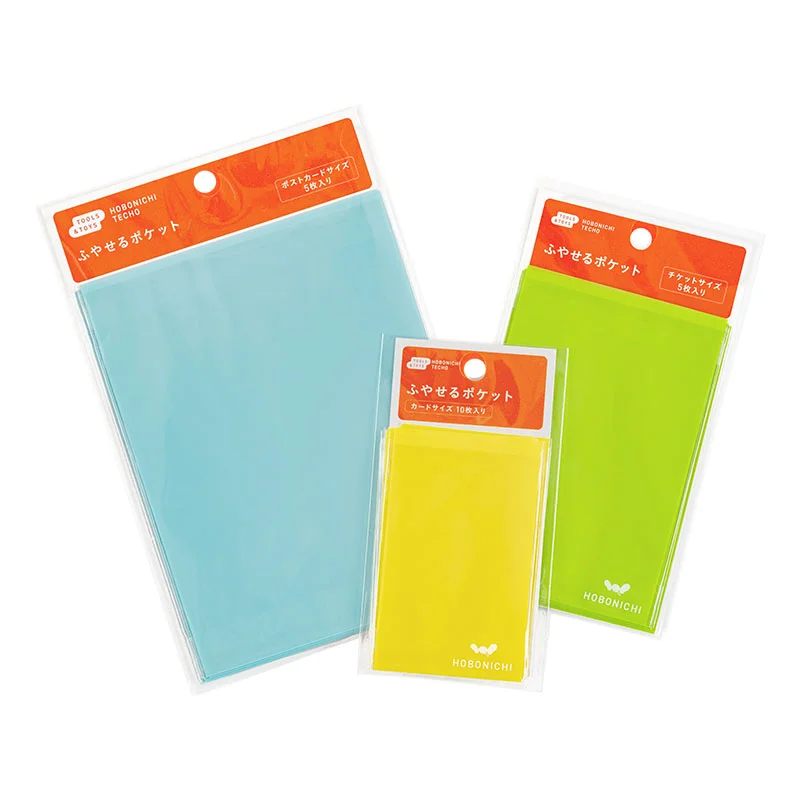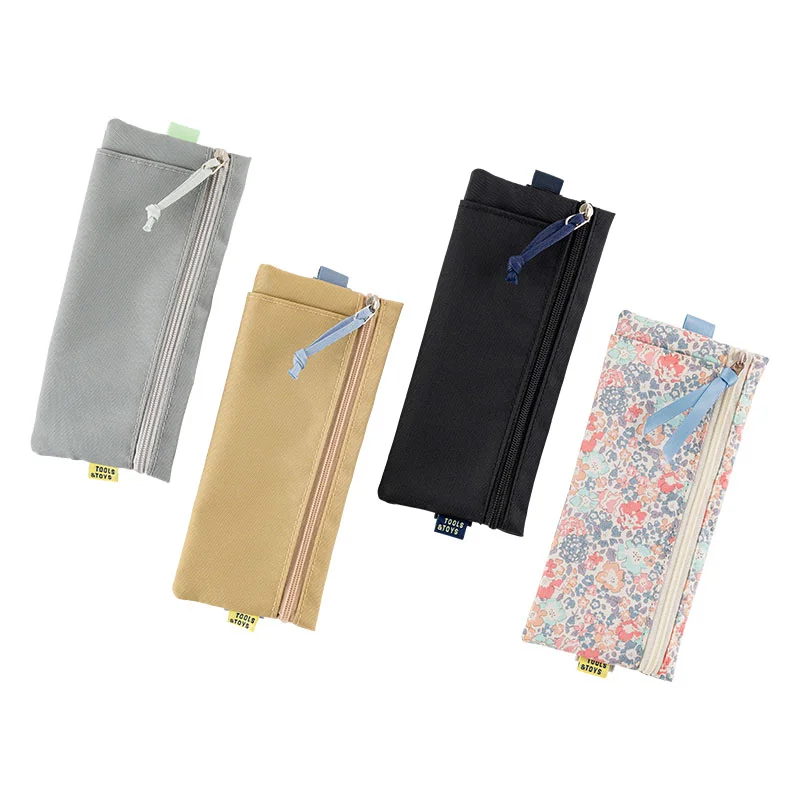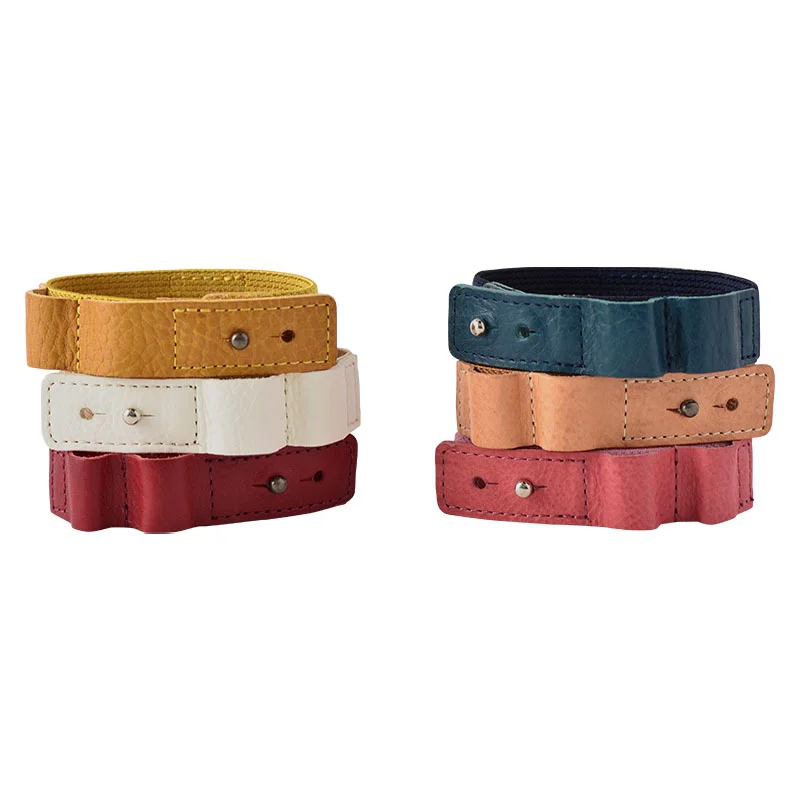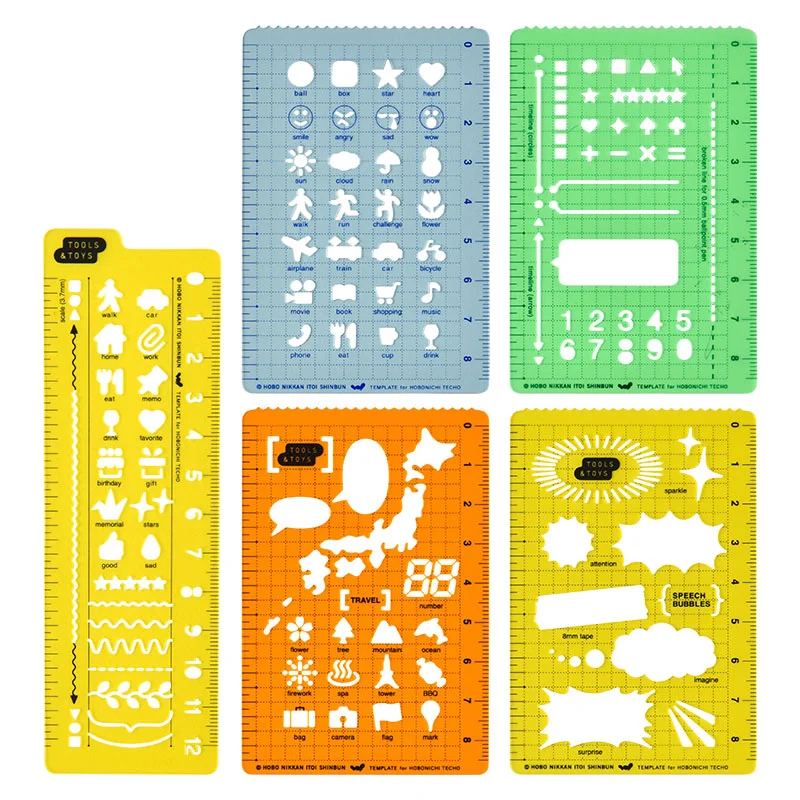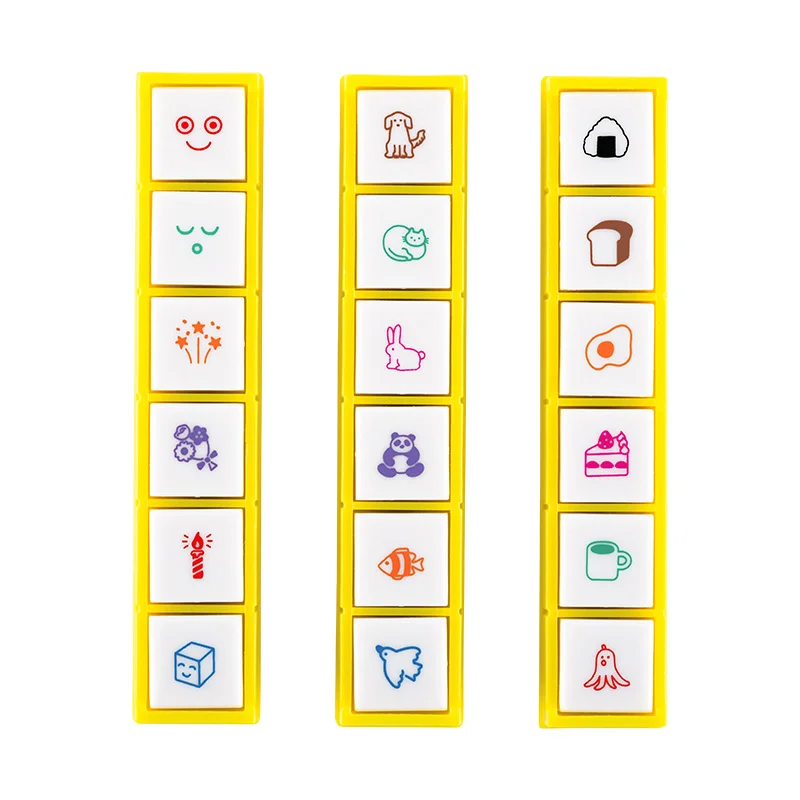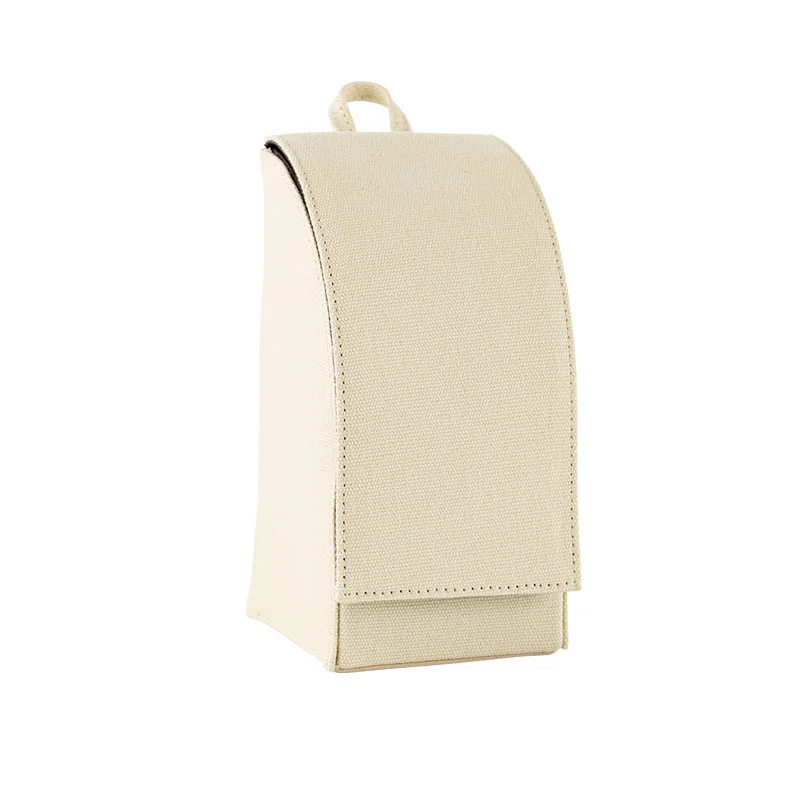Tokyo National MuseumHasegawa Tohaku - Pine ForestWeeks Hardcover Book / Weekly Horizontal / JPN edition / Apr start / Mon start
- 2025 New
- Japanese ONLY
- Apr Start
- ON SALE FEB 1
In this work, the artist avoids the prominent outlines typical of ink painting, using only delicate gradations to depict a windswept pine forest with hazy light seeping through the mist. Off in the distance are snow-capped mountains, filling the image with humid, cold air.
Pine Forest is a work of art that was painted by Hasegawa Tohaku nearly 420 years ago during the Azuchi–Momoyama period. The painting currently resides in the Tokyo National Museum as a national treasure and is considered a masterpiece in early modern ink painting.
This popular national treasure, which has stolen people’s hearts with its enigmatic charm, is now available as a Hobonichi Techo Weeks book.
The techo cover focuses on the right-hand screen of the original Pine Forest painting. The material is made with a lightly textured cloth on a hard cover with some give to it so it still bends. 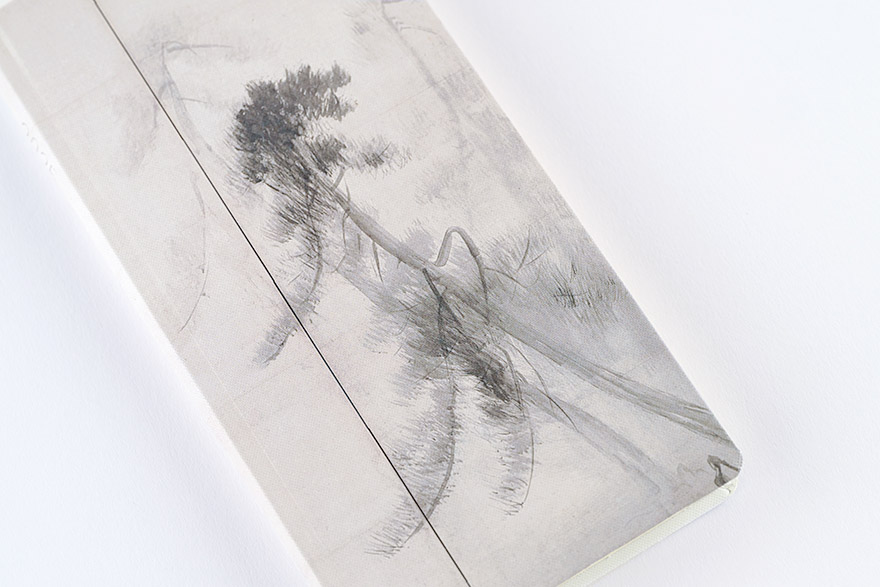
You can see how ink alone still gives the artwork a feeling of depth with incredible applications of gradation and meticulous brush strokes. 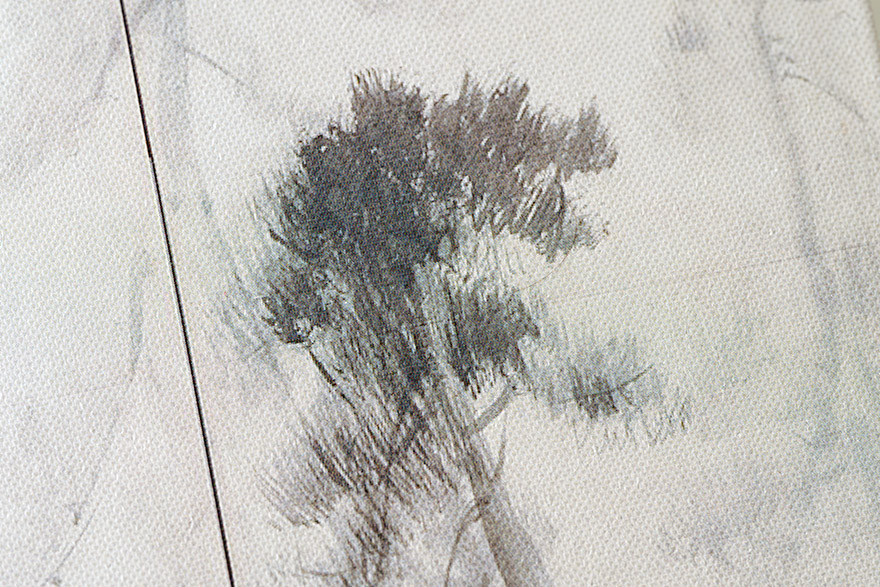
The year 2025 is foil-pressed in a matte silver. The year is only featured on the spine of the book to leave the artwork on the front cover unobstructed. 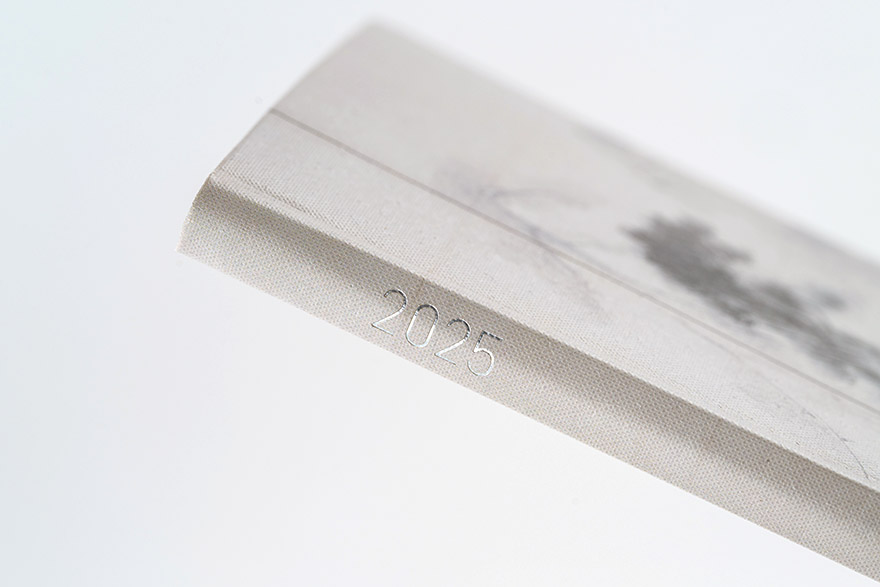
The back cover is white with a bluish tint to evoke the image of thawing snow. The bottom left includes logos for the Tokyo National Museum and Hobonichi. 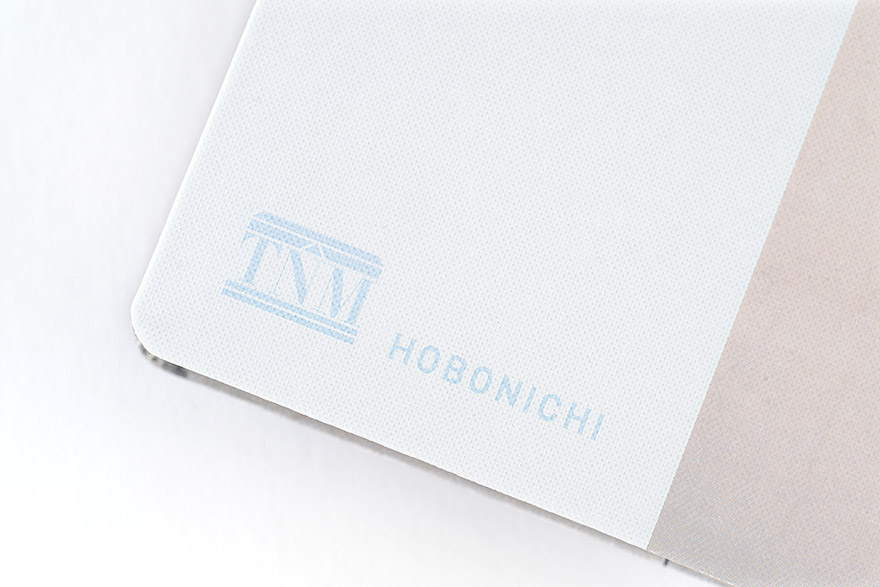
The book comes with an informational card that gives an overall view of the entire original Pine Forest painting, which stretches across a left- and right-hand screen. You can bend the card and stand it up to have a miniature version of the original. 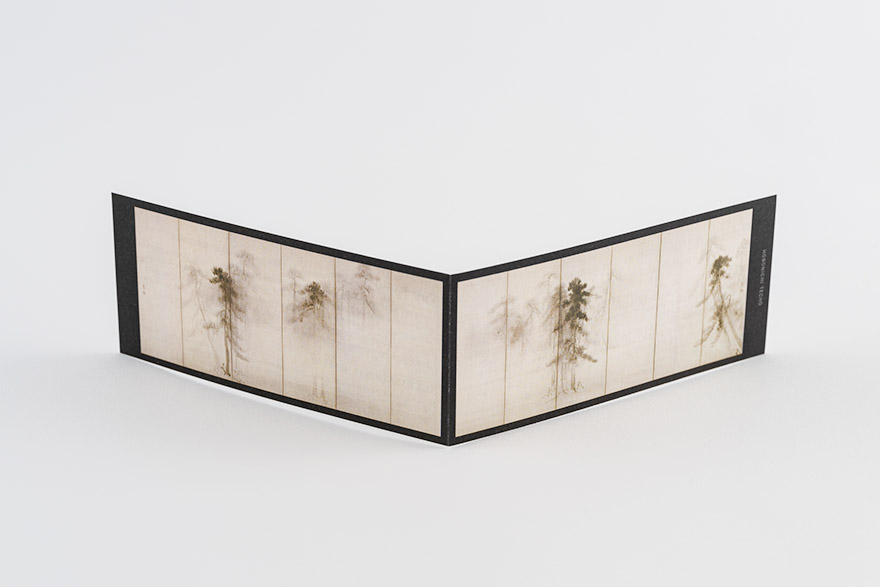
Hasegawa Tohaku was born in 1539 in Nanao, Noto Peninsula, Ishikawa Prefecture. He painted Buddhist pictures in his hometown of Nanao as a painter until his early 30s, after which he was discovered by Sen no Rikyu and moved to Kyoto. He was believed to be in his 50’s when he painted Pine Forest. Some believe that Tohaku, who lost his son at a young age, may have painted this image from memory while imagining the coast of his hometown where he walked with his son.
Looking at this artwork can put your mind at ease, provide a sense of comfort, and remind you of your own hometown or memorable place. Pine Forest has an almost magical charm to it in the way the scenery transcends time and place to resonate with all viewers. We hope this techo will bring comfort to those who carry it on them.
*A portion of proceeds from this product will be donated to the Japan Red Cross in support of recovery and reconstruction after the Noto Peninsula Earthquake Disaster of 2024 and the Noto Peninsula Heavy Rain Disaster of September 2024.
When you order this Hobonichi Techo Weeks, you’ll receive a clear, adhesive corner pocket you can stick anywhere you like. 
The book uses thin and light yet durable Tomoe River paper. This paper that underwent an overhaul with the 2024 edition techo is more resistant to bleed through, lighter despite being the same thickness, and has a smoother surface by adjusting the fibers of the paper. 
The Spring edition Weeks book has space for writing in plans or journal entries, and it also has 73 pages of grid paper memo pages in the back. The back of the book contains bonus pages, including Sample Symbols and Icons and Recommended Noodle List of 47 Prefectures. 
If you’d like storage space or a way to change up the look of your Weeks book, you can customize your book by pairing it with a Weeks cover.
See Weeks cover lineup
Introduction to the Tokyo National Museum series products
(Hobonichi Techo 2025 spring lineup)
Staff List
- Photographer
- Styled Images: Masaki Miyashita(hannah) / Product Detail: Hiroyuki Oe
- Stylist
- Haruka Kimura
![]()
- Tokyo National MuseumHasegawa Tohaku - Pine ForestWeeks Hardcover Book / Weekly Horizontal / JPN edition / Apr start / Mon start
- ¥2,970(incl. tax)
Recommended Techo Books and Covers
![]()
- Jan/Apr Start
- JPN/ENG
- ¥2,640
- Jan/Apr Start
- JPN/ENG
- ¥2,640
![]()
- Jan/Apr Start
- JPN/ENG
- ¥2,640
- Jan/Apr Start
- JPN/ENG
- ¥2,640
![]()
- Jan/Apr Start
- JPN/ENG
- ¥2,640
- Jan/Apr Start
- JPN/ENG
- ¥2,640
![]()
- Jan/Apr Start
- JPN/ENG
- ¥2,970
- Jan/Apr Start
- JPN/ENG
- ¥2,970
![]()
- Jan/Apr Start
- JPN/ENG
- ¥2,640
- Jan/Apr Start
- JPN/ENG
- ¥2,640
![]()
- Jan/Apr Start
- JPN/ENG
- ¥2,970
- Jan/Apr Start
- JPN/ENG
- ¥2,970
![]()
- Jan/Apr Start
- JPN/ENG
- ¥2,970
- Jan/Apr Start
- JPN/ENG
- ¥2,970
![]()
- Jan/Apr Start
- JPN/ENG
- ¥2,970
- Jan/Apr Start
- JPN/ENG
- ¥2,970
Recommended Stationery and Accessories
![]()
- ¥330 - ¥440
- ¥330 - ¥440
![]()
- ¥660
- ¥660
![]()
- ¥330 - ¥370
- ¥330 - ¥370
![]()
- ¥1,650 - ¥2,200
- ¥1,650 - ¥2,200
![]()
- ¥1,980
- ¥1,980
![]()
- ¥550 - ¥620
- ¥550 - ¥620
![]()
- ¥1,045
- ¥1,045
![]()
- ¥1,980
- ¥1,980
Compatible Techo Covers
Specifications
Size H: 188 x W: 94 x T: 11 mm / H: 7.4" x W: 3.7" x T: 0.4"
*Specifications may vary slightlyWeight Approx. 135 g Main material Rayon / Paper - Weeks Book (Japanese / April Start)
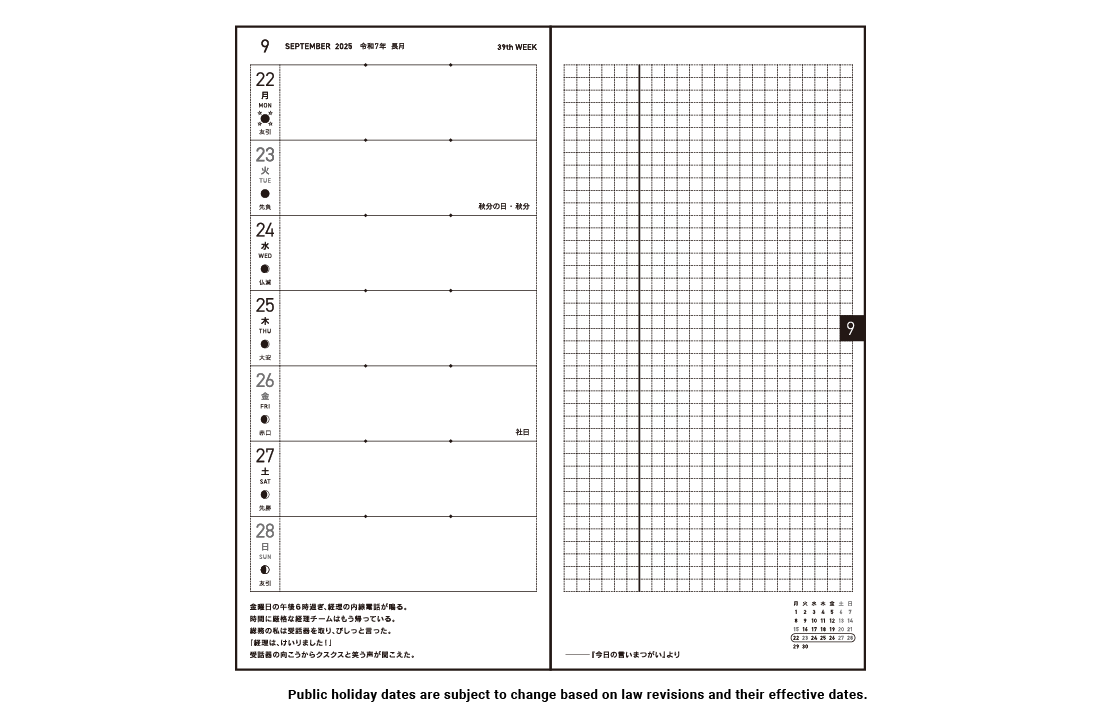
Language Japanese Pages 240 pages Paper Type / Binding Thin, light Tomoe River paper resistant to bleeding and designed for planners / Stitch-binding Graph Paper Size 3.55 mm Start of Week Monday-start week Yearly Calendar 2024, 2025, 2026 Yearly Index Apr. 2025 - Mar. 2026 (2 pages) Monthly Calendar Mar. 2025 - Apr. 2026 (28 pages) Daily Quotes One per week (Japanese) Weekly Pages Feb. 24, 2025 - Apr. 5, 2026 (116 pages)
*All weekly pages include quotes.Graph Paper 73 pages Bonus Pages Shorthand Note-Taking / Using Common Items to Measure Size / My 100 / Sample Symbols and Icons / Recommended Noodle List of 47 Prefectures / Solar Terms / Emergency Preparedness / Age Table / Conversion Chart / Getting the most of Hobonichi / Contact List / Personal Notes Listed Information Week of the year / Rokuyo (traditional Japanese calendar) / Solar terms / Japanese holidays / Moon phase (weekly pages include every phase, monthly calendars only include full and new moon) Other See the Exploring Each Type page for more details
Please Read Before You Buy
In order to provide you with the most satisfaction for your product, we've compiled a list of warnings, potential issues, and tips to keep in mind for this particular product. Please be sure to read this information carefully before placing your order.
- Cover corners are slightly bumpy and shiny
The corners of the cover contain light traces of press marks, shines, and lumps. This is an unavoidable part of the manufacturing process.
- Coloring may stain other objects
The dye in the cover may stain other objects if it rubs against or sticks to them, especially if the cover is wet from water or sweat from your hands. Please store with care.
- Imprinted year numbers may peel
The numbers of the year are stamped onto the cover in metallic or other colored leaf, so strong rubbing or everyday use may cause the numbers to peel off.
- Avoid storing in hot and humid places
Please avoid storing your product in hot, humid places or placing it atop other objects for long periods of time as this may result in lower quality and color stains.
- Test fountain pens before regular use
When using fountain pens or water-based ink pens, depending on the environment, you may notice smudging, bleed-through, or slow drying of the ink. We recommend testing the pen somewhere in the book beforehand, such as the back memo pages, before use.
User recommendations
If you’ve used any of these products, we welcome your notes on what you like about them or what led you to buy them so we can share it with customers who are currently considering these products. We’d also love to welcome comments from customers who purchased their techo outside the Hobonichi Store or received their book as a gift.
